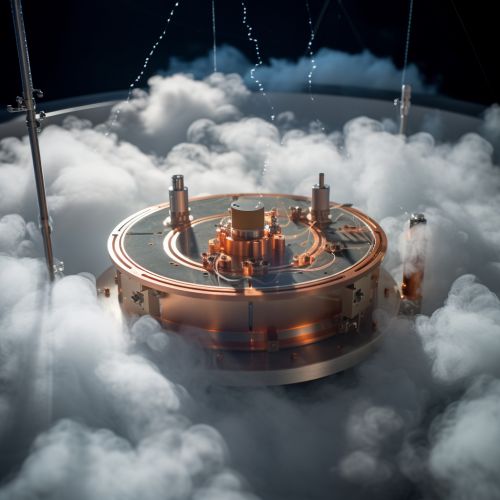Antimatter
Introduction
Antimatter, a term coined by Arthur Schuster in 1898, is a material composed of antiparticles, which have the same mass as particles of ordinary matter but opposite charge and other particle properties. Antiparticles bind with each other to form antimatter just as ordinary particles bind to form normal matter. For example, a positron (the antiparticle of the electron) and an antiproton (the antiparticle of the proton) can form an antihydrogen atom. Physicists theorize that at the Big Bang, equal amounts of matter and antimatter were produced. However, observation shows that our visible universe is made almost entirely of matter.


Properties
Antimatter particles share the same mass as their matter counterparts but qualities such as electric charge, spin direction, and CPT (Charge Parity Time) symmetry are reversed. The electrical charge of those antimatter particles is opposite to that of normal matter. For instance, positrons, or anti-electrons, hold a positive charge while electrons carry a negative charge. When a particle and its antiparticle meet, they annihilate each other. In the process, the mass of the particles is converted to energy in accordance with Einstein's equation, E=mc^2. This makes antimatter a potential energy source.
Production and Storage
Antimatter is produced in high-energy collisions when energy is converted into mass. This occurs in particle accelerators, certain types of radioactive decay, and some types of high-energy cosmic rays. The Large Hadron Collider (LHC) at CERN is one of the few facilities on Earth capable of producing antimatter in notable quantities. However, storing antimatter is a significant challenge due to its tendency to annihilate when it comes into contact with matter. Current containment strategies involve magnetic confinement to prevent antimatter particles from touching matter.
Antimatter in Astrophysics
Antimatter plays a crucial role in the field of astrophysics. The apparent asymmetry of matter and antimatter in the visible universe is a major unsolved problem in physics. Theories such as baryogenesis have been proposed to explain this imbalance. Antimatter also has implications in the study of cosmic rays and in models of the early universe. Antimatter galaxies, if they exist, are expected to have the same chemistry and absorption and emission spectra as normal-matter galaxies, and their astronomical objects would be observationally identical, making them difficult to distinguish.
Applications
The potential applications of antimatter are vast. In medicine, positron emission tomography (PET) uses positrons to produce high-resolution images of the body. Antimatter could also be used as a fuel for interstellar travel due to its high energy density, although this is currently beyond our technological capabilities. In theory, antimatter weapons could be far more potent than nuclear weapons, but the difficulty of production and containment makes this unlikely.
